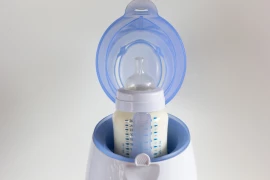
What is Down Syndrome and Its Types?
- What is Down Syndrome and Its Types?
- Physical Characteristics of Individuals with Down Syndrome
- What Are the Types of Down Syndrome?
- 1. Trisomy 21
- 2. Translocation Down Syndrome
- 3. Mosaic Down Syndrome
- Cognitive and Behavioral Delays and Symptoms in Down Syndrome
- How Is Down Syndrome Diagnosed?
- Screening tests
- Diagnostic Tests
Although Down syndrome is a genetic difference, it is a deformity, that is, an anomaly. It was first discovered and suggested by the British Doctor John Langdon Down in 1986. This syndrome is one of the most common conditions in humans. It is a condition that occurs when a child with Down syndrome normally has 46 chromosomes in his body, but has 47 chromosomes. Down syndrome is not a disease, it is a genetic difference. Pregnancy age changes the risk of Down syndrome. Pregnancy over the age of 35 increases the risk of Down syndrome. It is a disease seen in one in 600 and 1000 births in the world and in our country. Down syndrome causes physical growth retardation, characteristic face shape and moderate mental problems. The health problems of children with Down syndrome can be treated, but there is no definitive solution. The disease continues until the person dies.
Physical Characteristics of Individuals with Down Syndrome
- Flat face
- Oblique almond-shaped eyes
- Short neck
- Wide, short and chubby hands
- Small ear
- A tongue that doesn't fit in mouth
- White spots on the iris of the eye
- Small hands and feet
- A single line across the palm
- Little fingers curved towards the thumb in some
- Weakness in muscle tone
- Loose joints
- Shorter than normal stature in children and adults
What Are the Types of Down Syndrome?
There are three types of Down syndrome: trisomy 21, translocation, and mosaic.
1. Trisomy 21
This anomaly, which is caused by an excess of the 21st chromosome at the time of cell division, is the most common and most common condition in the world. Approximately 95% of individuals with Down syndrome have Trisomy 21. In this type of down syndrome individual, each cell in the body has 3 separate copies of chromosome 21 instead of the normal 2 copies.
2. Translocation Down Syndrome
This type accounts for approximately 3% of individuals with Down syndrome. It occurs when the 21st chromosome, which causes Down syndrome, is linked with another chromosome. It is not seen very often. In some cases, the 21st chromosome may duplicate itself and cause an anomaly. . In the translocation type, Down syndrome is inherited if one of the parents is a carrier. The rate of this situation is 33%. If the mother is a carrier, the probability of giving birth to an individual with translocation Down syndrome is 20%. If the carrier is a father, it varies between 5% and 2%.
3. Mosaic Down Syndrome
They are individuals that make up 2%-5% of individuals with Down syndrome in total. Some cells carry 46 chromosomes, while others carry 47 chromosomes. When the wrong division problem occurs in the later stages of fertilization, one line is 46 chromosomes, the other line continues as 47 chromosomes, and in this case, a mosaic structure is formed. Mosaic means mixture or combination.
Cognitive and Behavioral Delays and Symptoms in Down Syndrome
- Delay in speech and language development
- Delays in crawling and walking skills during infancy
- Attention and focus problems
- Sleep problems (Insomnia)
- Stubbornness and tantrums
- Late learning of toilet training
How Is Down Syndrome Diagnosed?
There are two types of tests to detect Down syndrome during pregnancy: these are screening tests and diagnostic tests. The screening test tells the pregnant woman and her healthcare professional whether her pregnancy is low or high with Down syndrome. Screening tests cannot provide a definitive diagnosis, but it is a safer way for mother and baby. Screening or diagnostic tests cannot predict the full impact of Down syndrome on a baby, nor can anyone predict it.
Screening tests
Screening tests usually include a combination of a blood test that measures the amount of certain substances in the mother's blood (e.g. MS-AFP, Triple Screen, Quad screen) and an ultrasound that creates and displays a picture of the baby. One of the things the technician looks at during the ultrasound is the fluid at the back of the baby's neck. Excess fluid in this area may indicate a genetic problem, and it may also indicate down syndrome. These screening tests help determine the baby's risk of Down syndrome. Rarely, screening tests may give an abnormal result even if the baby is not a problem. Sometimes the test results are normal and still an existing problem can be overlooked.
Diagnostic Tests
Diagnostic tests are usually performed after a positive screening test to confirm the diagnosis of Down syndrome. Types of diagnostic tests include:
- Chorionic Villus Sampling (CVS)—examining material from the placenta.
- Amniocentesis - examines the amniotic fluid (fluid from the sac surrounding the baby).
- Percutaneous Umbilical Blood Sampling (PUBS) - examines blood in the umbilical cord
These tests look for signs and changes in the chromosomes that would indicate a diagnosis of Down syndrome.





